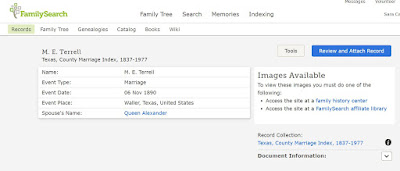This is more introspective than most of my posts that deal
with the more distant past. I grew up in a small town where my parents
associated with like-minded people and supported anti-war causes during the
Vietnam War. Dad ran for U.S. Congress in 1970 against a long time “hawk” in a
conservative, rural district and was defeated soundly. We followed the
Watergate hearings on our small, black and white TV during the summer of 1973
and cheered when Nixon resigned.
My mother enjoyed being socially conscious. She
demonstrated for peace at a nearby air base. A letter to the New York Times that
was printed in the Sunday Magazine was one of her greatest achievements. When
she traveled to Nicaragua with Witness for Peace from August 20th to
29th, 1988 she was 64. She wrote a diary that I read now with my own
60-year-old eyes. We are in strange times these 30 years later. How will I, how
will each of us, make a difference?
Brief background: Daniel Ortega was President of Nicaragua in
1988, leader of the Sandinista National Liberation Front which had successfully
overthrow the dictatorial Somoza government. While supplying economic aid to Ortega’s
government, the U.S. under Regan continued to back the opposition right-wing
Contras in the continuing civil war. Daniel Ortega was reelected in 2006 and
rules today. The more things change, the more they stay the same. The Level 3
advisory issued 6 July 2018 by the U.S. State Department lists crime, civil
unrest and limited health care availability as significant deterrents to
travel. Non-emergency U.S. government personnel have been brought home. My son wisely
decided against crossing into Nicaragua this summer as he toured nearby
countries.
These are the words of Betty Simmons as she entered this war
zone as a Witness for Peace:
This was an experience like no other. I answered a notice in
the Sun in May. Went to a planning
meeting in June where I met many of my fellow travelers. It seemed like a real mixed
group: two Syracuse University students, a language teacher, a photographer, a
Maryknoll priest and a nun, a social service worker, two retired men, a Witness
for Peace young man; one or two who plan to go were not able to attend. We hope
for 16.
Joe is supportive; Hugh thinks I am insane; representative
of reactions. Solidarity from true friends.
July and August, time for preparation: shots, ordering
medications, thinking of what to pack and what not to pack. Collected antibiotics,
soap, pens, etc. to leave there. Many well wishes, calls, just before time to
leave.
Final meeting at Larry Tetler’s in Fayetteville on Friday
night. Joe took me. Proud to have two carry-on sized bags and my small
backpack. We talked of money – I am to carry ¼ of our funds for Nicaragua. We
labeled a number of cartons: dental, medical, and school supplies.

The participants:
Sharon Souva
Sr. Chris
Slomiliski
Barb
deFrancqueville
Bonnie
Windfield
Kate Adams
Mary Sopchak
Sophie Oldfield
Dennis Nett
Rev. Ted Sizing
George
Burton
Ben Tupper
Clayton
Koontz
Peter Wirth
Larry Tetler
Sim Doherty
Jack
Pelletier
and me!
August 20
Overnight with Clayton. Fitful sleep. Good hot shower.
Coffee and fresh peaches for breakfast. His wife drove us to the airport where
(all but Sophie) met. Boxes checked through. Off at 7:00 with a stop in
Cleveland and long wait in Miami. On to Honduras. Two stops for fuel. Then at
Tegucigalpa to change planes. Can see many U.S. helicopters and planes and many
armed soldiers at the airport, a duty-free shop, a woman selling drinks from a
make-shift bar and sitting on a carton. In less than an hour aboard our second
TAM-Sasa flight for about ½ hour flight to Managua. Too dark to see much of
anything. Took quite a while to change our money ($60 each, 380 c. to $1) and
get our yellow visa. We all adopted a woman and her baby (months old) coming
from Miami to visit her family in Managua. No soldiers here!
We were met by Michelle, a long-term Witness for Peace, and Don
Reasoner, Center for International Dialogue. Our bus is far from new. The owner
and a driver go with it. Off to our hotel Colibri. Bonnie, Mary, Sophie and I
volunteer to sleep next door. Introduction to the third world: dim light,
people at a table near the entry, clothing drying, shower and latrine,
stationary tubs. Down the hall to our room: four cots, no window, very warm
(like Hong Kong). It was a long, long day. Paper thin walls: two young men
talking over their evening.
















